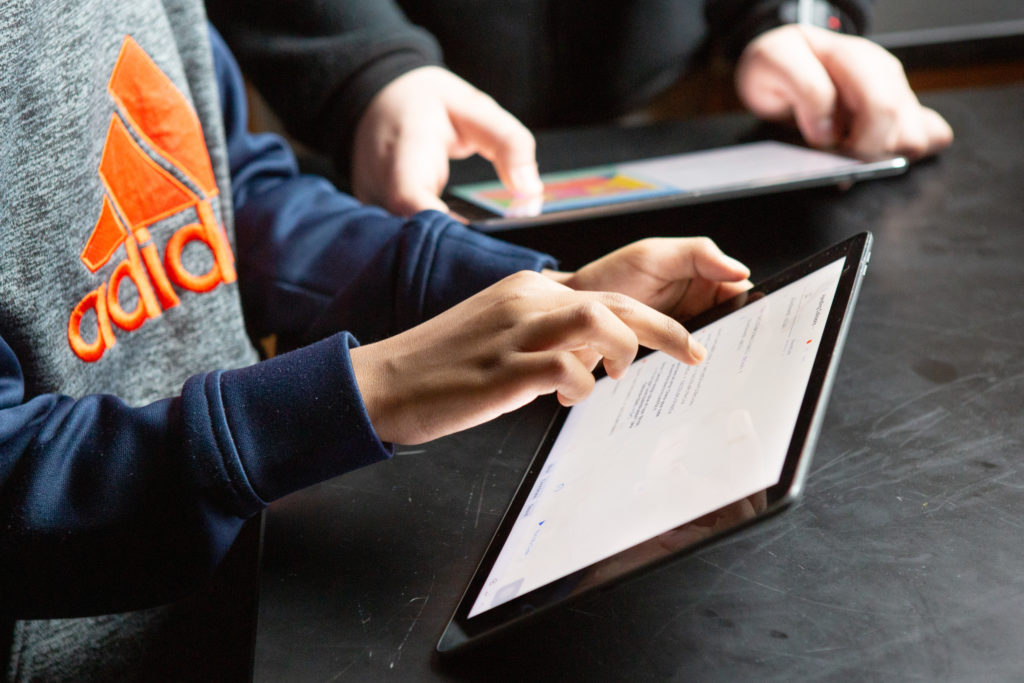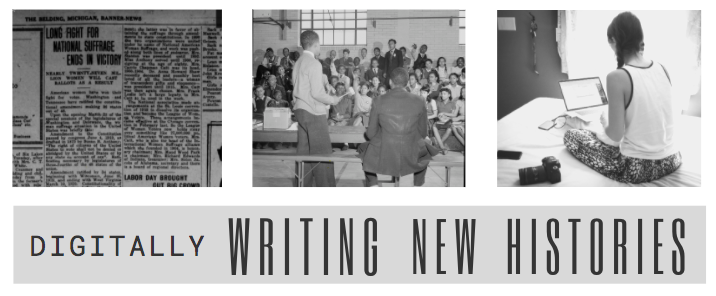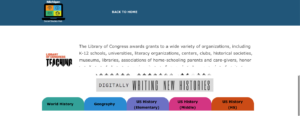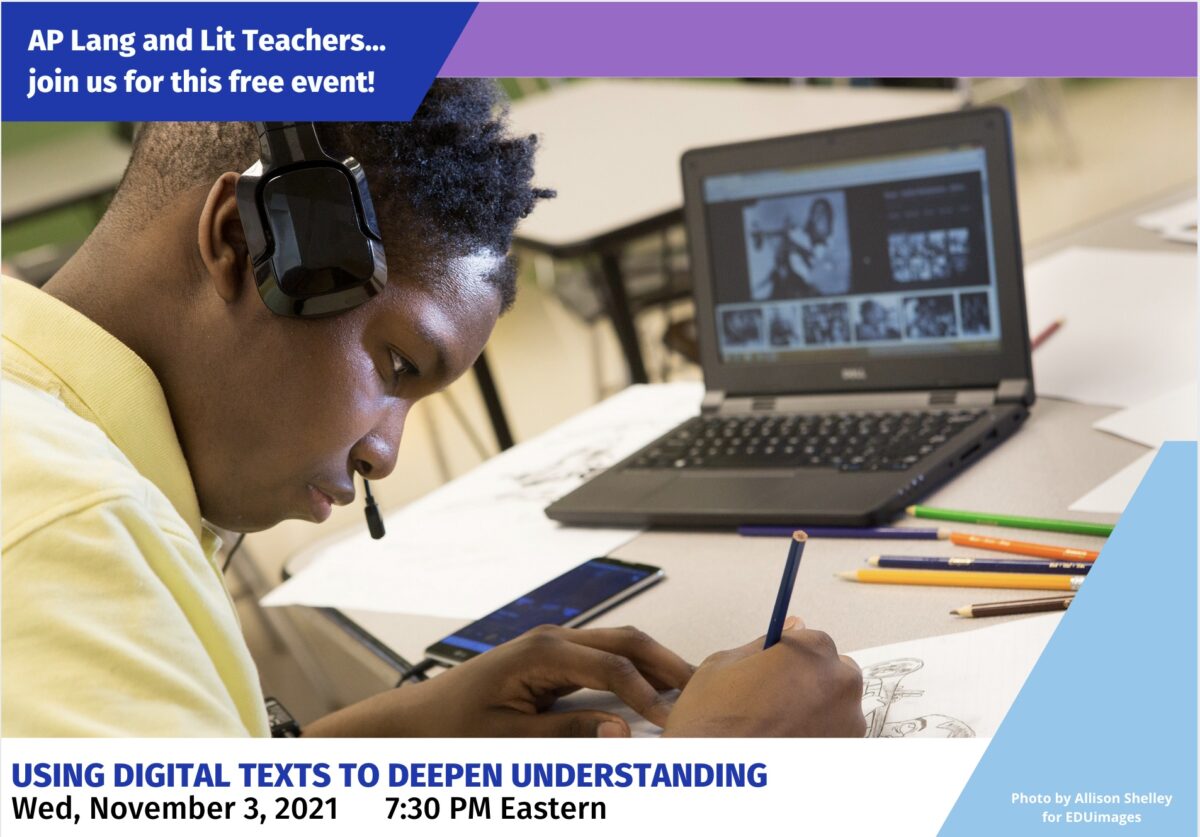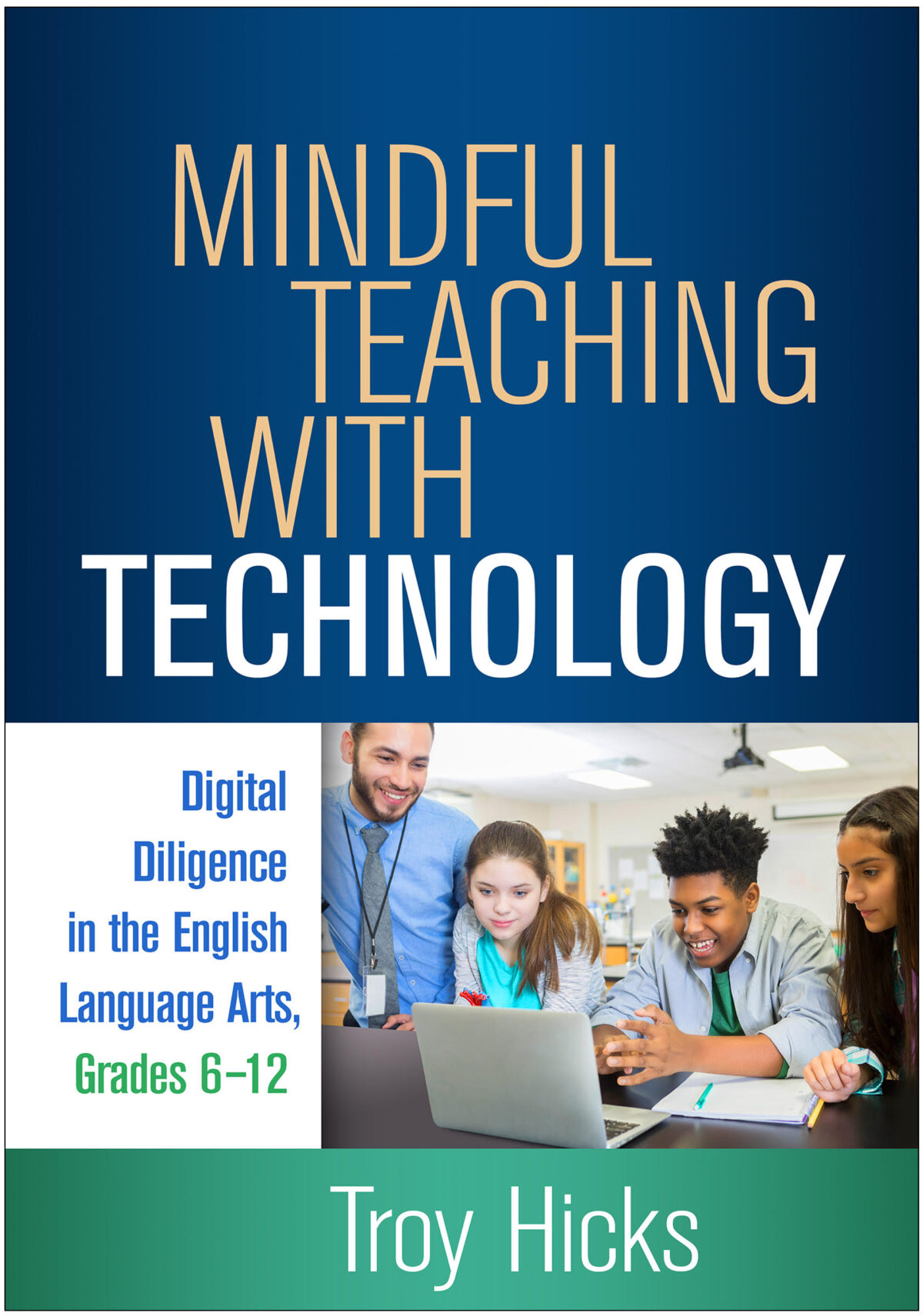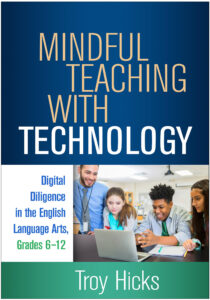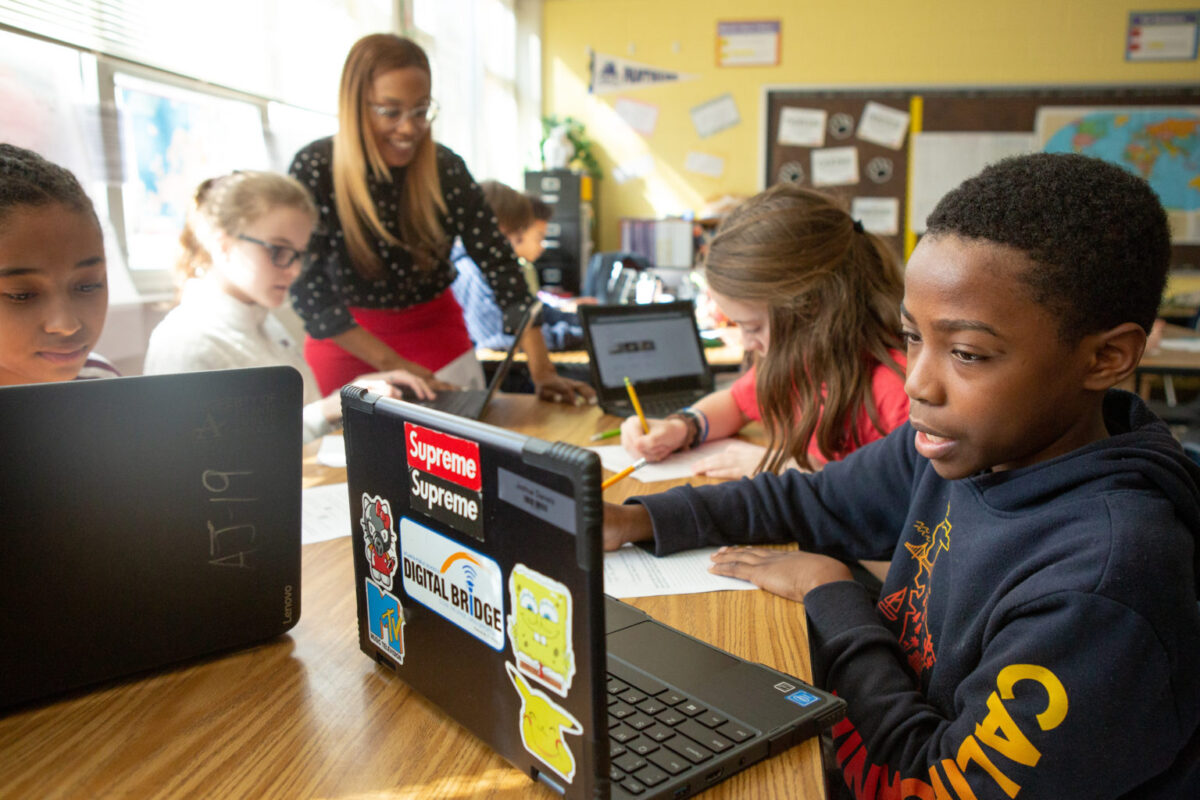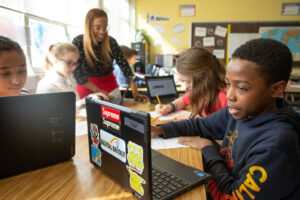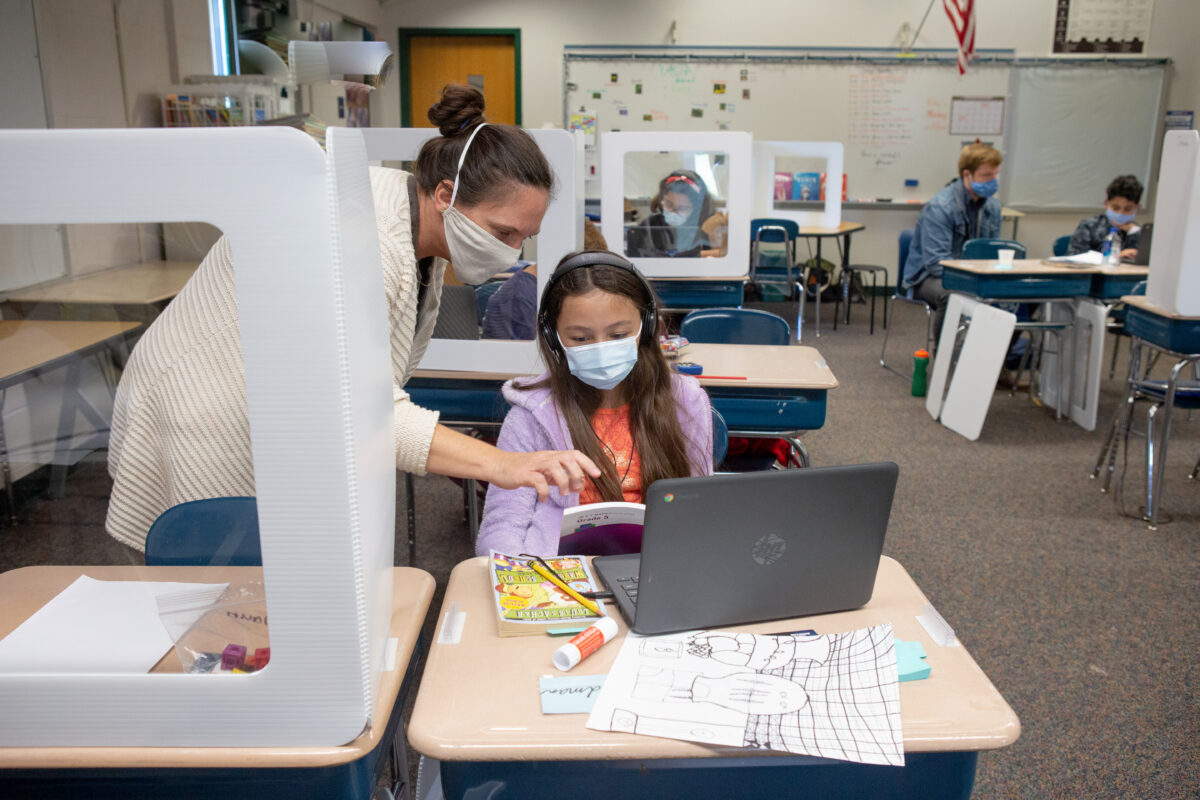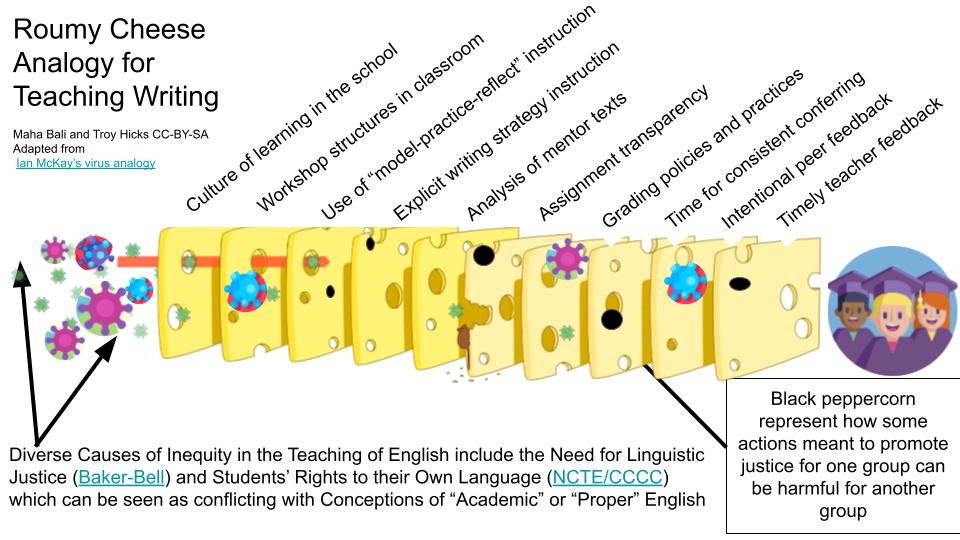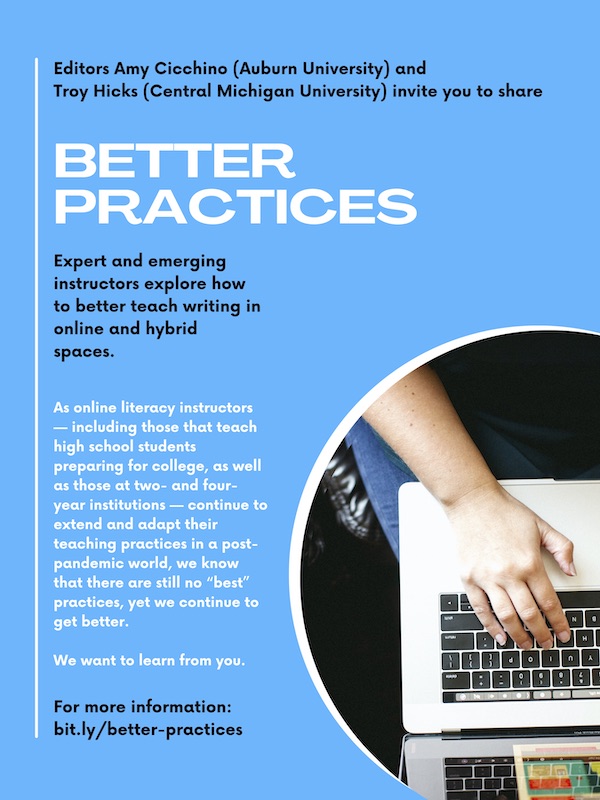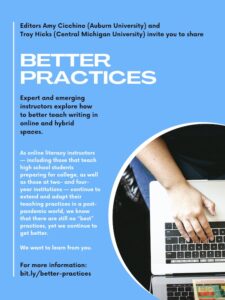As America moves into an endemic stage of our relationship with COVID-19, and professional learning is slowly shifting back to face-to-face settings, I was fortunate enough to travel to the CCIRA conference this weekend, and to share talks related to topics from my recent book, Mindful Teaching with Technology: Digital Diligence in the English Language Arts, Grades 6-12. In one of the sessions, I used a phrase that I learned early in graduate school from a leader in my field and advisor at the time, Ernest Morrell and have borrowed many times since: “both/and.”
Searching for the phrase, there are millions of hits about “both/and” thinking, not least of which is the memoir by Huma Abedin. That said, when Morrell introduced me to the idea it was in relation to the kinds of reading and writing (as well as listening and speaking, viewing and visually representing) that we ask students to do in our typical ELA classrooms. In this sense, he was pushing back against the kinds of dichotomies that characterize most language arts instruction such as to simply read the story and write an analysis of the characters and plot, or to write an argument in the form of the five-paragraph essay.
So, for nearly 20 years, I’ve carried the idea of the “both/and” into my work, too, in particular around digital writing and collaborating with K-12 colleagues to consider new possibilities for writing in their classrooms. I will often start by saying that, “yes, I want for my own children and all students to both be able to craft words into sentences, and sentences into paragraphs, and paragraphs into essays, and…” then providing any number of examples of digital writing tools and tasks that they might consider. After one of my sessions at CCIRA, one of the participants came up and said how much she appreciated that phrase, “both/and,” and wondered if I could elaborate just a bit more.
In response, I shared an example of a lesson where students could take one idea and extend it in different ways. In the book, one of the chapters is an extended lesson that focuses on helping students craft an initial idea in a short paragraph or kernel essay, and the then moving their argument into three forms of digital writing using Adobe Spark (Renamed Creative Cloud Express in June 2022), which has recently been rebranded as Creative Cloud Express. In the lesson, students are encouraged to come up with a hashtag that summarizes their main argument, and to to then reframe their message in 1) an image with a brief caption like a post on social media, to then 2) record their message in a short video, and, finally, to create 3) a web page with a “call to action” as an external link. The entire lesson could take just one class period, or could be stretched out over days, depending on the time that you have and what goals you hope to accomplish. This is what I mean as just one example of the “both/and” kind of thinking.
As I continue to reflect on NCTE’s “Definition of Literacy in a Digital Age,” especially their point that literacies include “a wide range of skills, competencies, and dispositions” and that “[t]hese literacies are interconnected, dynamic, and malleable,” I keep returning to the “both/and” idea. Knowing that our instruction needs to be more flexible than ever and that – even though, according to Common Sense Media, there are still gaps – due to the pandemic, more students in more schools have access to devices right now than ever before (and, perhaps, may ever happen again in the future), I wonder: if we don’t move ELA instruction toward a “both/and” mentality now, when will it happen? Again, while I am sure that divides still exist and that school policies and procedures may prevent some students from taking their devices home on a regular basis (if at all), the simple fact is that the vast majority of students will not be any more connected in the future than they are now.
So, what can ELA teachers do to encourage the “both/and” approach as we consider common tasks in our classrooms? What if we ask students to:
- Both read the stories to look for elements plot, character development, and use of literary devices, and then craft their analysis and response in the form of a timeline showing how each emerges in the story, using a tool like Sutori or Timetoast to show the intersections of these elements?
- Both write their initial argument essay an incorporate evidence from outside sources, and then step away from the text to do a “distant reading” of their own work using the word cloud and word frequency tools with a corpus analysis via Voyant Tools so they can use different functions to see their essay in a different manner, using that data to then prepare for revision?
- Both prepare their speech while recording a practice session, and then post a recording of them practicing it to a video annotation site like Now Comment or Video Ant, noting their own questions and concerns about their performance, and seeking input from their peers and teacher before delivering it?
These are just a few examples, and I am sure that there are many other ways we can continue to take advantage of the tech access that we have right now to more fully engage our students (above and beyond simply assigning digital dittos and collecting work through our LMSs). I will be curious to hear how the landscape of digital literacy is changing as I am able to talk with more and more teachers in the months ahead and, as always, welcome further inquiry, dialogue, and collaboration around these topics here on my blog or via social media.
What might you do to move any of your ELA assignments toward a “both/and” stance, embracing the opportunities that you have right now to utilize the technologies available to you and your students?

This work is licensed under a Creative Commons Attribution-NonCommercial-ShareAlike 4.0 International License.
Photo by Allison Shelley for EDUimages

